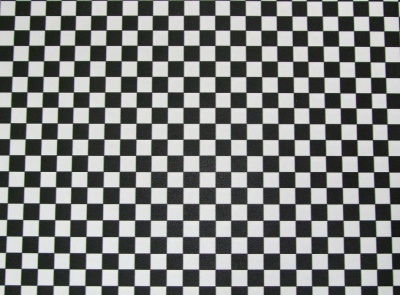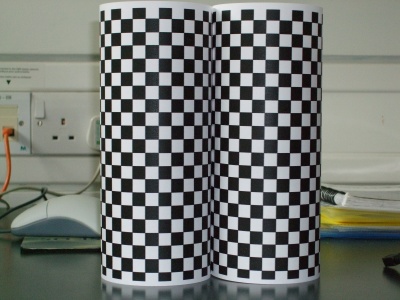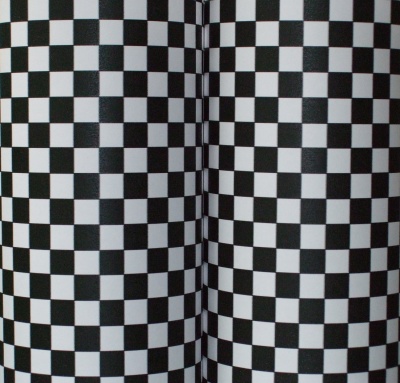Skip over navigation
This problem is inspired by a picture created by the artist Bridget Riley entitled "Movement in Squares" (1961)
Take two pieces of squared paper and colour alternate squares, giving a checkerboard pattern.
 Now, curve your pieces round to create two cylinders, and stand
them up together.
Now, curve your pieces round to create two cylinders, and stand
them up together.

When you look straight at the two cylinders, the squares appear as rectangles getting narrower and narrower as the page curves away from you:





Or search by topic
Number and algebra
Geometry and measure
Probability and statistics
Working mathematically
Advanced mathematics
For younger learners
Moving Squares
Age 14 to 16
Challenge Level 





This problem is inspired by a picture created by the artist Bridget Riley entitled "Movement in Squares" (1961)
Take two pieces of squared paper and colour alternate squares, giving a checkerboard pattern.


When you look straight at the two cylinders, the squares appear as rectangles getting narrower and narrower as the page curves away from you:

How could you represent this effect on a flat piece of paper?
The diagram below shows what you might see if you looked at
the cylinder from above. The construction lines may help you to
work out how to recreate the image of the cylinders in two
dimensions.

You could vary the effect of your final image by altering the
size of the black and white squares.
We look forward to seeing your calculations and finished
products!
You may also like
Turning the Place Over
As part of Liverpool08 European Capital of Culture there were a huge number of events and displays. One of the art installations was called "Turning the Place Over". Can you find our how it works?
Where Art and Maths Combine
In this article, Rachel Melrose describes what happens when she mixed mathematics with art.
It Depends on Your Point of View!
Anamorphic art is used to create intriguing illusions - can you work out how it is done?

